Back to the fur trading days at Fort St. James
Day 48 of the trip – Friday, June 10th – was fun, spending a few hours at a Hudson’s Bay Company fur trading fort, and then making a fairly short drive to another lakeide campground.
Cottonwood Park on Stuart Lake at Fort St. James was a lovely spot to wake up at, and at 06:00, it looked like we might have decent weather for the day.
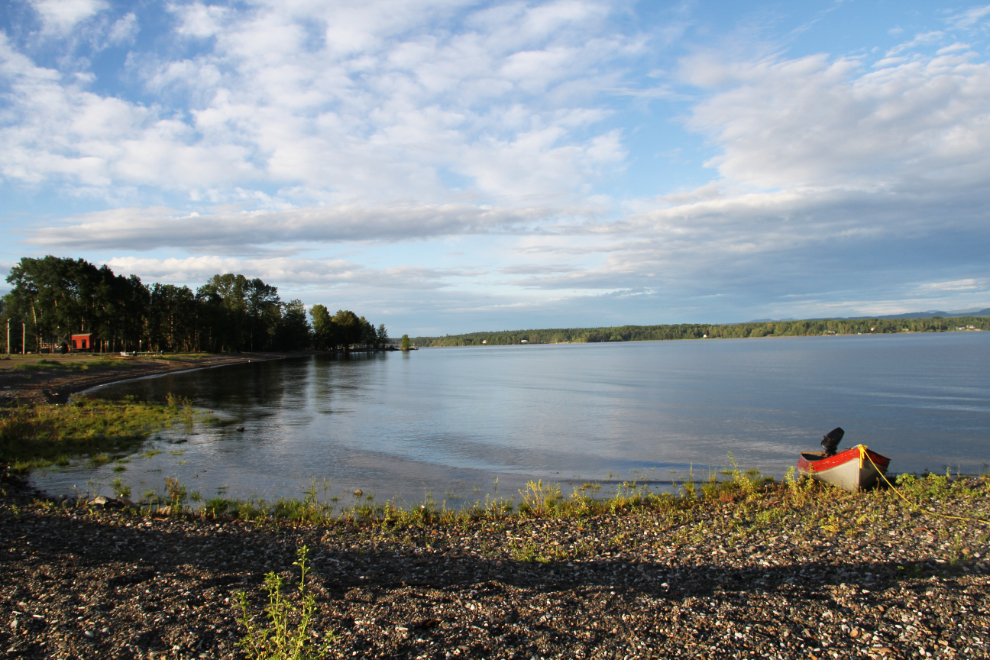
While the rest of the family slept, I was out wandering just after 06:00. This is the Tom Creek steam shovel, which was built by the Marion Steam Shovel Company in the 1920s. In the mid-1930s it was brought under its own steam to the Fort St. James area by Thomas A. Kelley. It was barged to Takla Landing, then walked 19 miles to Tom Creek, where it worked at a placer gold mine until 1940. It was brought to Cottonwood Park in 1994.

We were having breakfast at 09:00 when I spotted a potential photo. Walking a couple of hundred feet from the RV, I got this shot of the Ripples of the Past Interpretive Trail and Our Lady of Good Hope Catholic Church.
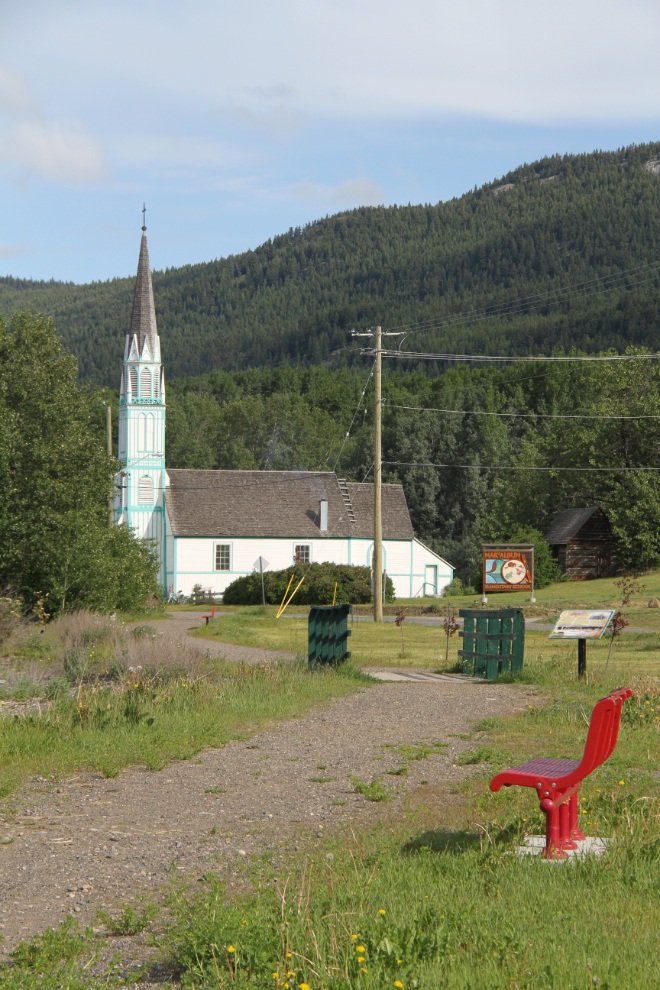
Looking back to the campground from near the washrooms. In the foreground is a 1/3 scale Junkers W34 float plane. This type of plane was used by Fort St. James aviation pioneer Russ Baker’s company, Central British Columbia Airways in the late 1940s. Note: various Web sites use several names for Russ Baker’s airline – this photo of Baker and the Junkers from “Bush Flying to Blind Flying” confirms the name I’ve used.
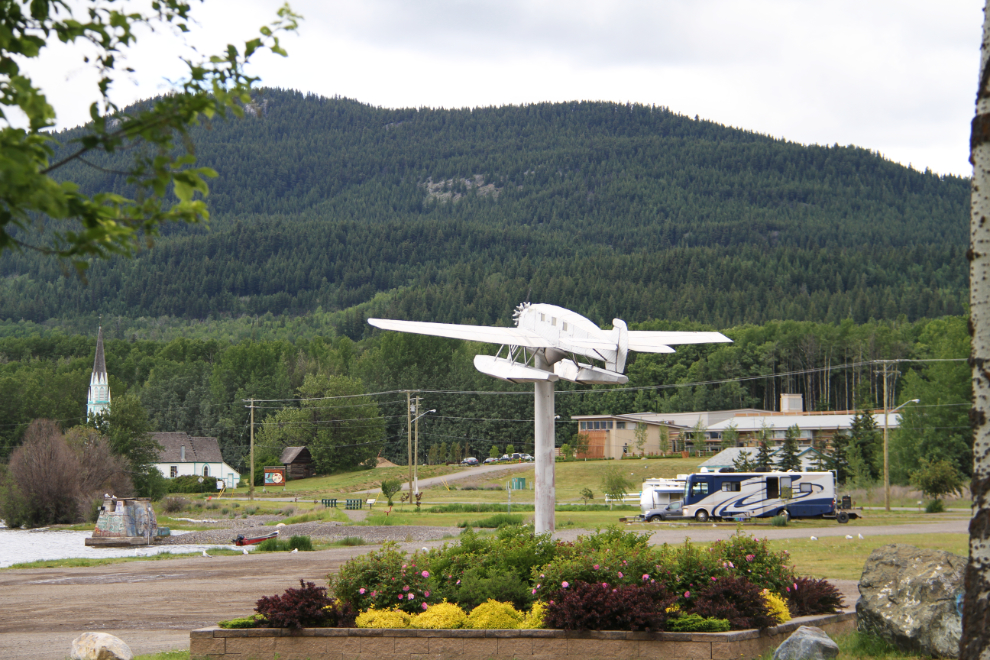
We dawdled around as usual, and after dumping the rig tanks and filling the water tank at the free Cottonwood Park sani-station, made the short drive to the Fort St. James National Historic Site.
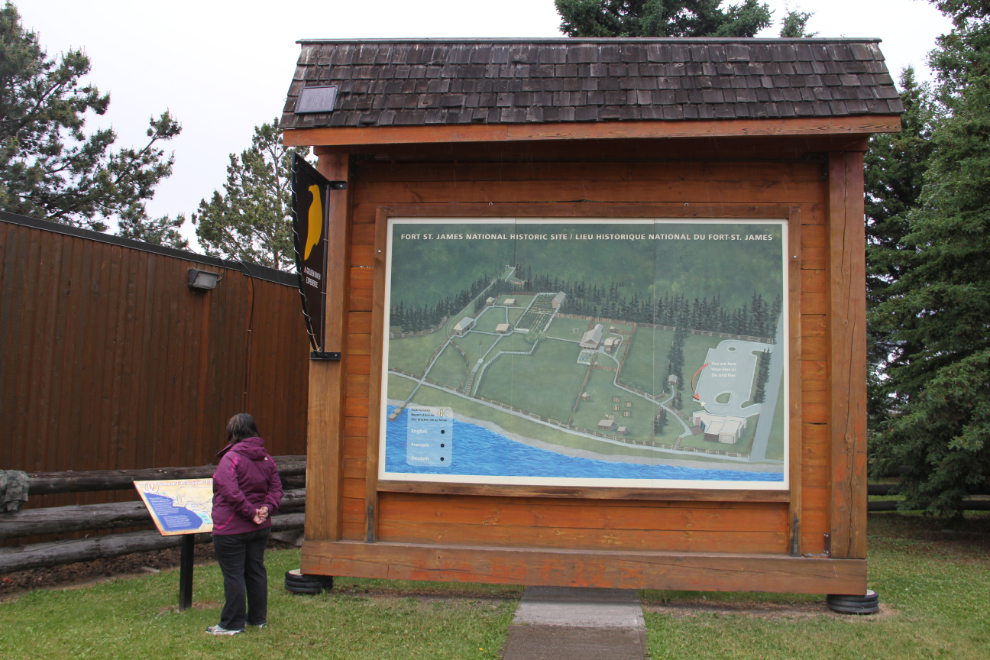
Our Parks Canada annual pass got us in, and we began our tour with the short film “A Letter Home”, which summarizes the fort’s past. It was the North West Company that built the original fort in 1806 – the second permanent fur trade post west of the Rocky Mountains. Fort St. James became the centre of the northern fur trade district, known as New Caledonia. In July 1821, the North West Company amalgamated with the Hudson’s Bay Company (HBC), and the Fort St. James operation continued on the original site until 1952.
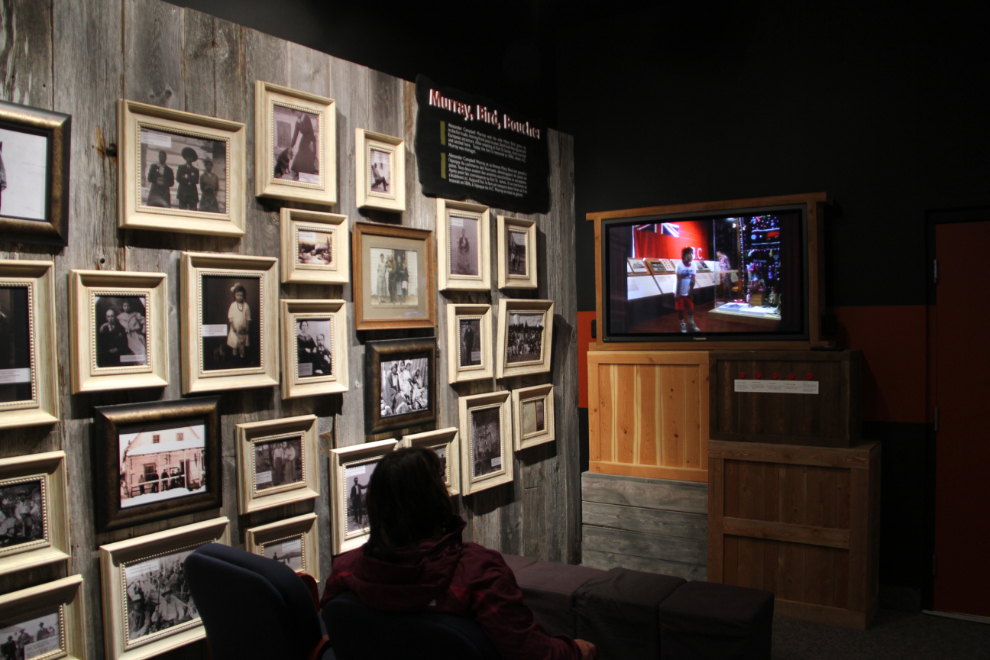
While student groups can be disruptive to a historic site visit, they can also be fun to watch, and the reality is that student tours make up a large percentage of vistors to some sites, including Fort St. James. Here, some kids are learning about piece en piece building construction.
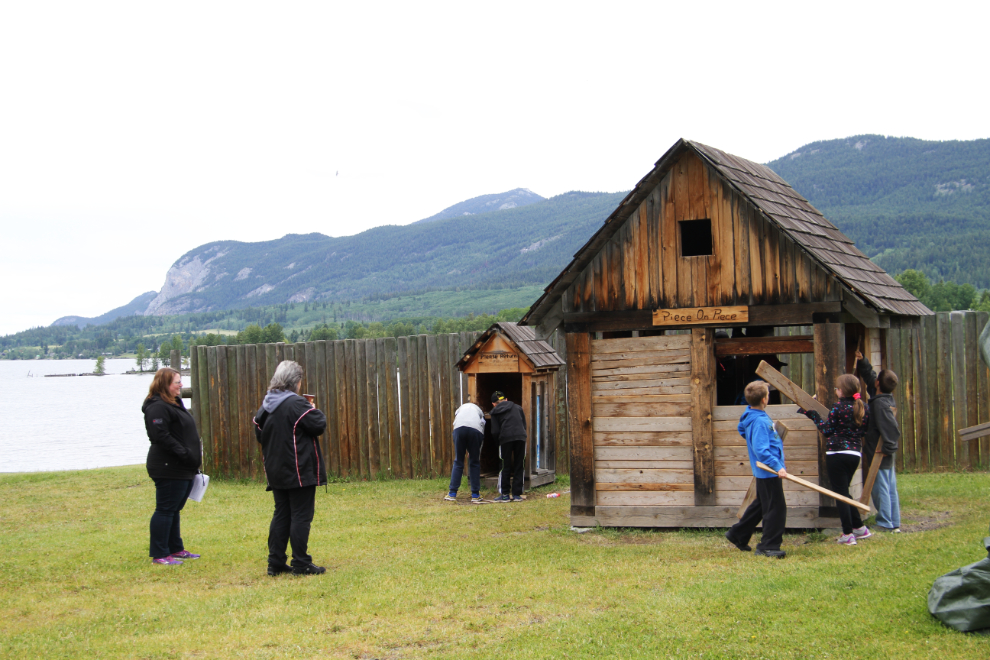
I’ve never known whether the “World Famous Chicken Races” billboard that I’ve passed by many times on Highway 16 was serious. It is – every day at 11:30, five chicken run down a track from their pen to freedom in the open grassy yard.
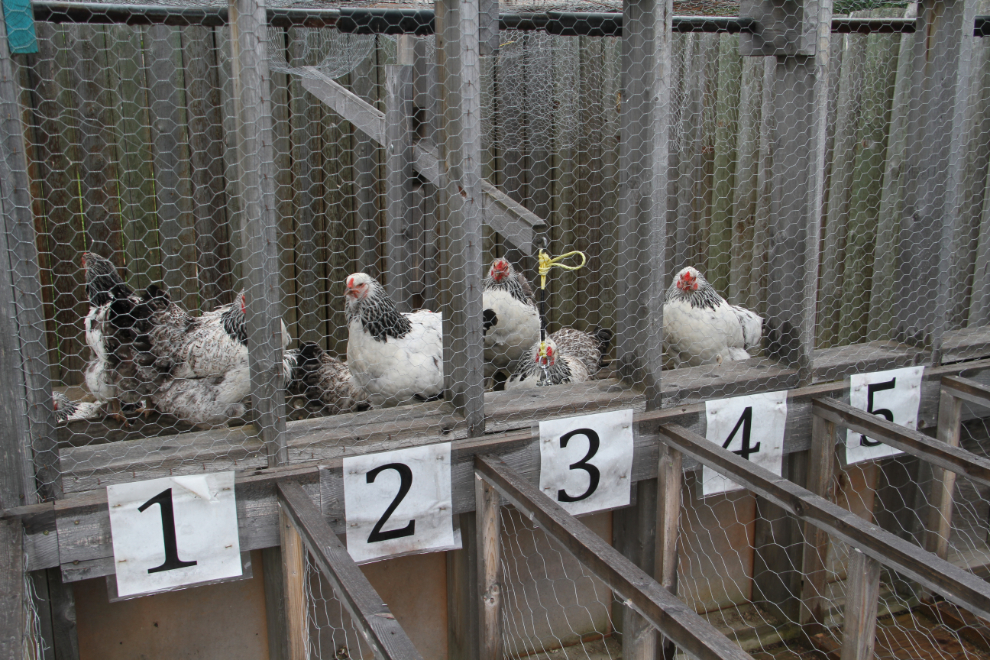
And they’re off!! It’s over in about 3 seconds, but good fun. It was mostly fun watching the chicken-wrangler getting them ready – one was just not in the mood to play 🙂
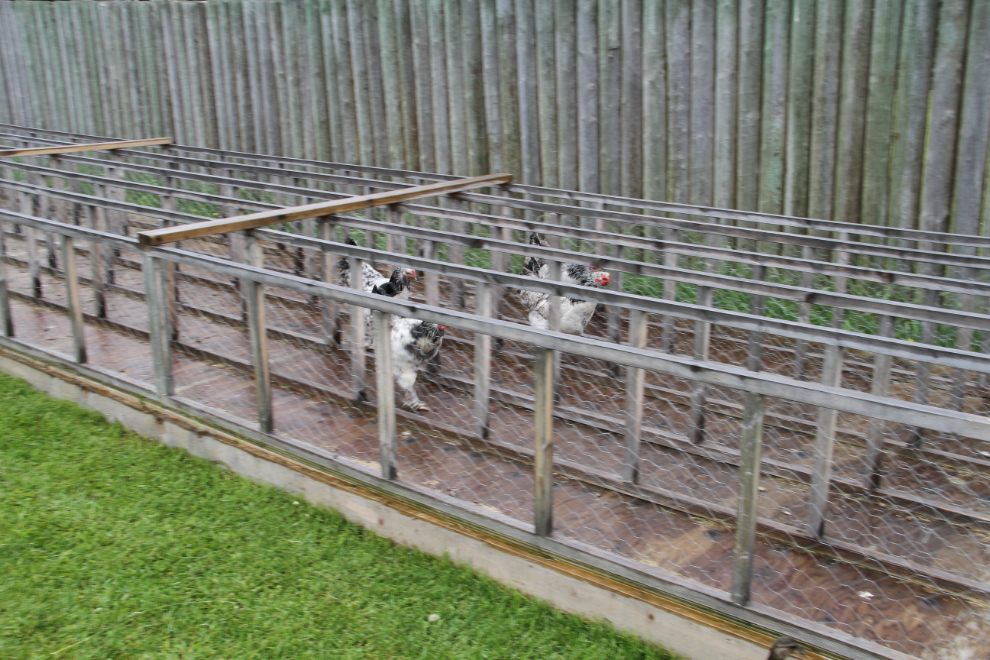
An interpreter was running a kids’ program in the General Warehouse and Fur Storage building (from 1888-89), getting them to guess which animal each fur came from. There’s a small fortune in furs there.
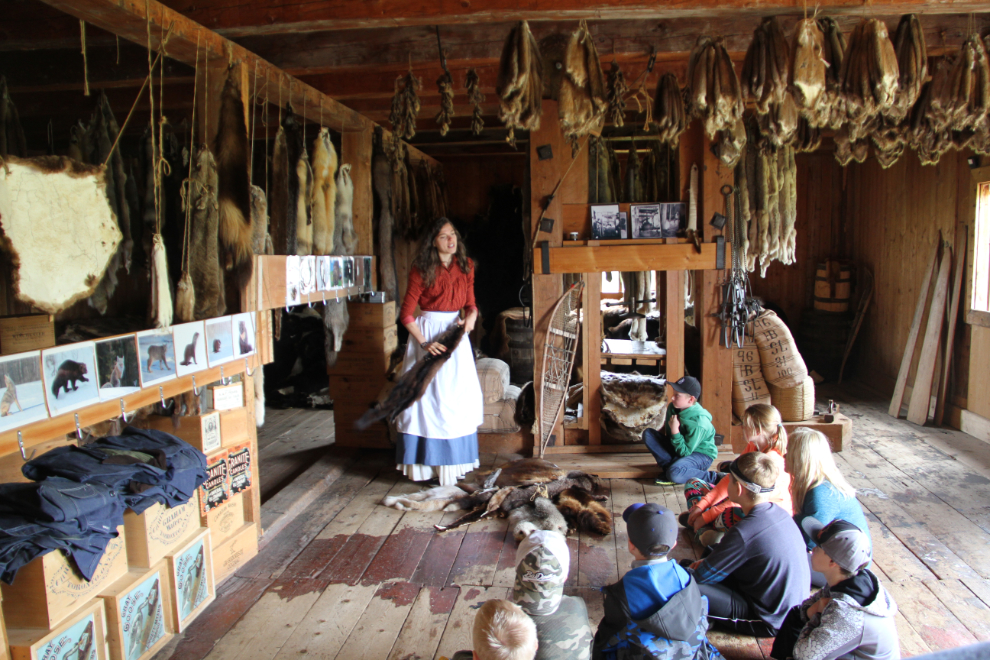
We were free to look around the building, which has a wide range of products from the site’s target date of 1896. Included are these boxes of Santa Claus brand “Pile Annihilator.”

Parks Canada says of the building: “The general warehouse holds the highest designation Parks Canada can bestow on heritage resources. It is perhaps the finest example of Red River framing (or ‘piece-on-piece construction’) in North America.” Today’s warehouse is from the fourth rebuilding of Fort St. James.
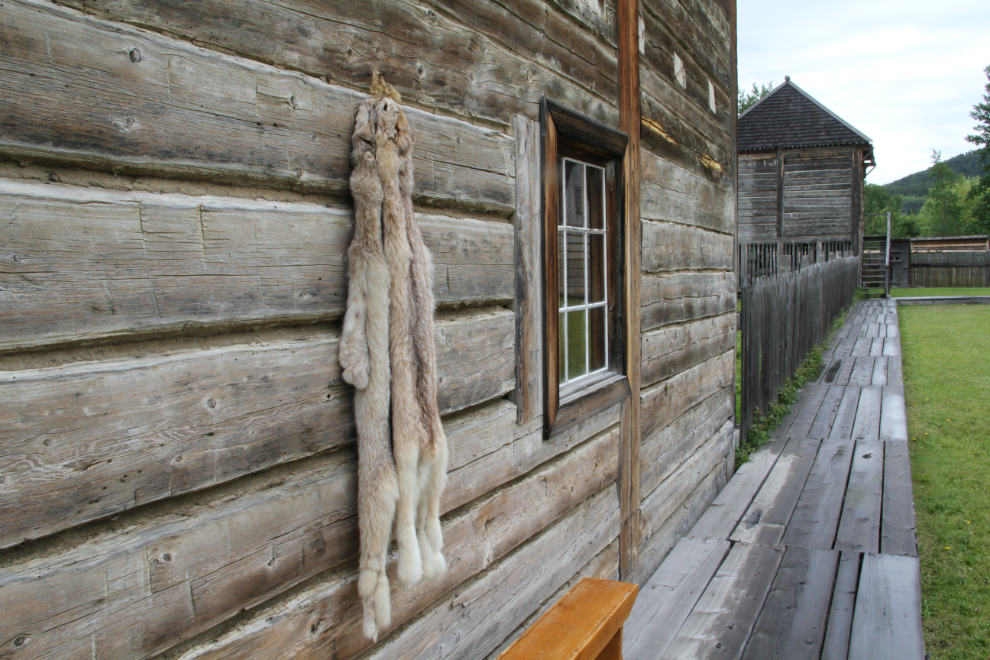
What is now the Men’s House, built of squared timbers in 1884, provided accommodation for temporary and permanent fort employees, as well as occasional visitors. It served first as a clerk’s house, then as a men’s house, and later as a guesthouse, a school, and finally, in the mid-1900s, as a private residence. The newspapers on the wall kept out drafts – they’re reprints of historic papers.
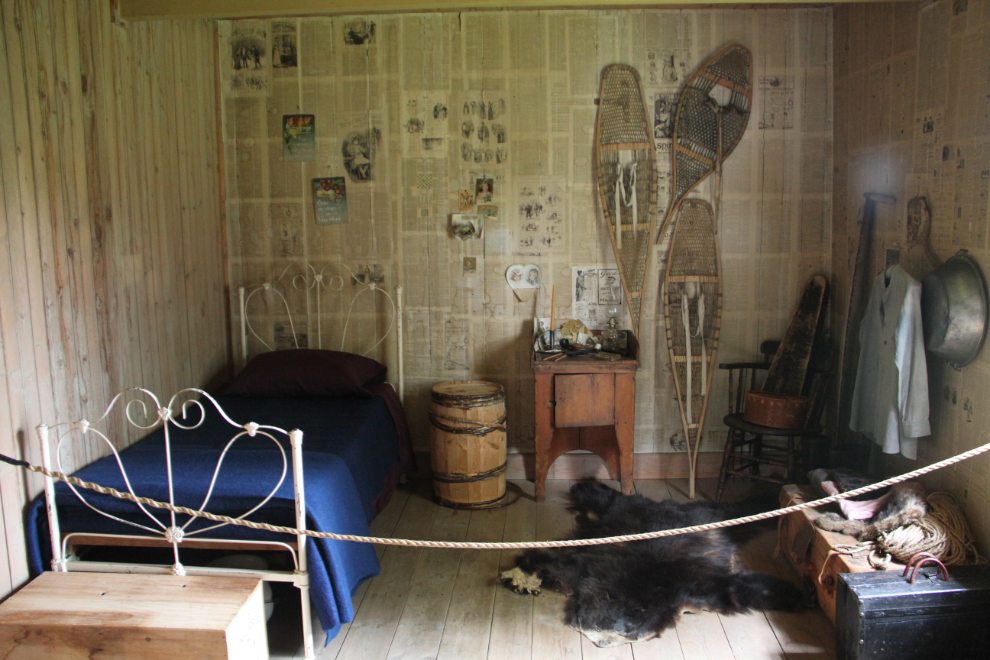
The views out many of the windows at the fort, looking over Stuart Lake, are extremely nice.
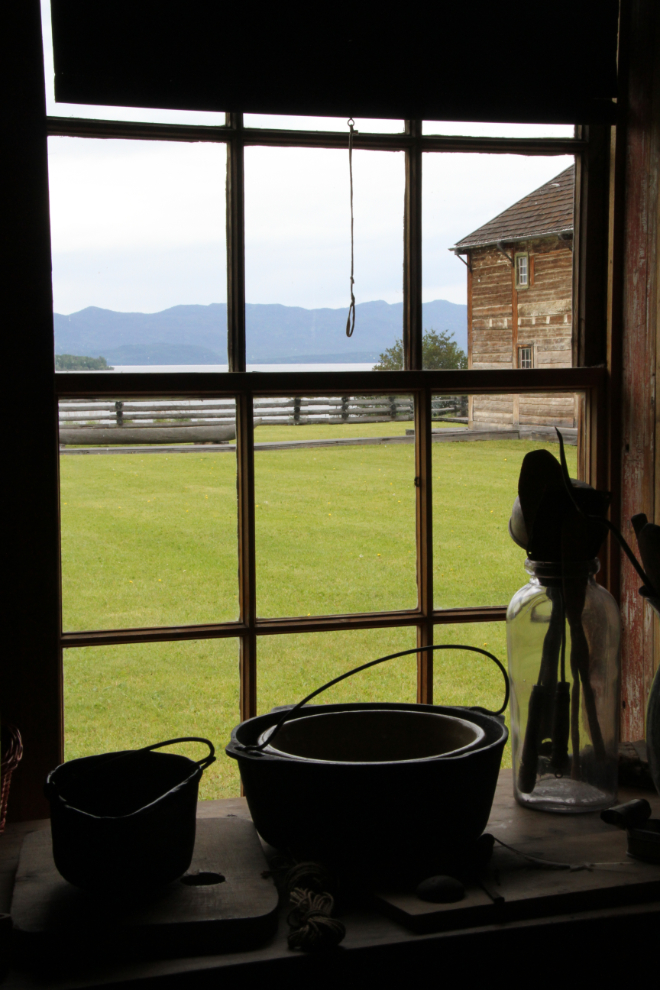
Picking through items to decide which ones you’d take with you on a winter trapping expedition was a very interesting process, with some surprises – like a rifle not being on the list.
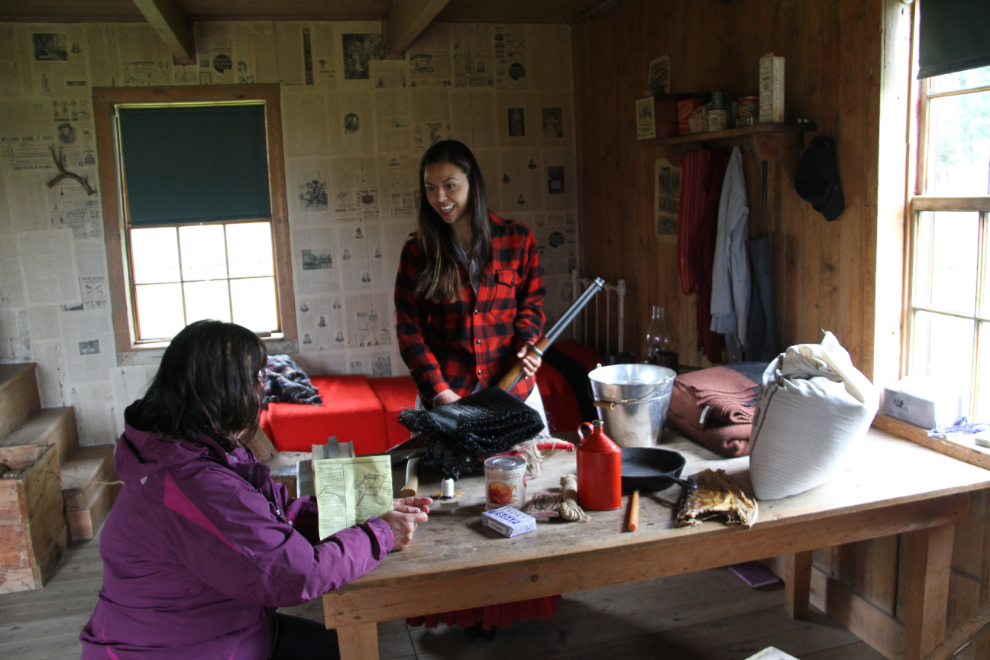
The Trade Store and Office was originally built in 1884, but the current structure is a reconstruction, as the original burnt down in 1919.
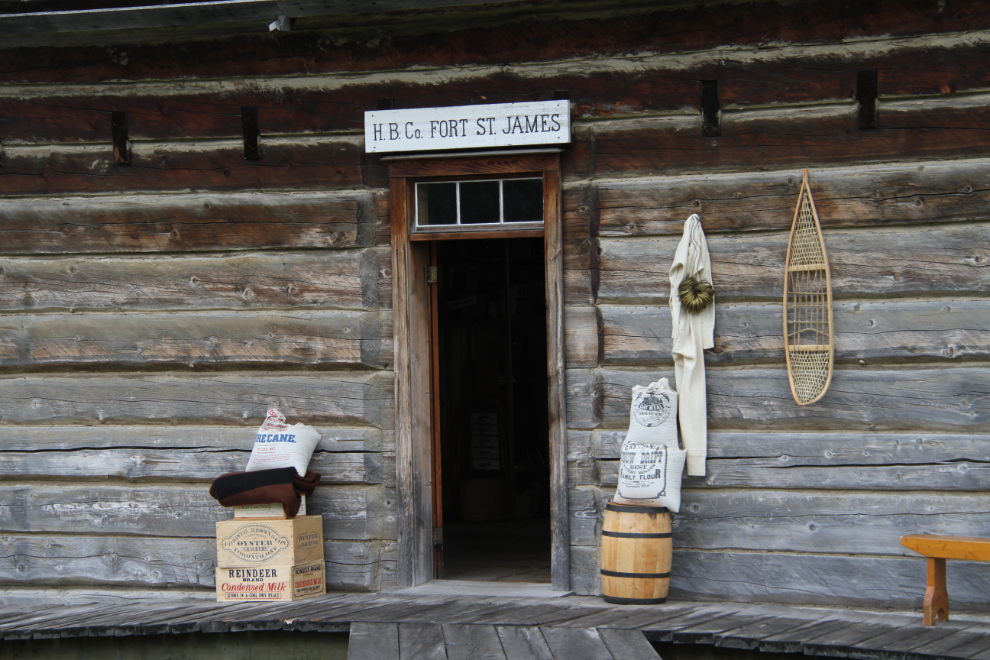
The Trade Store and Office was the heart of the fur trade operation, and Barry did a great job of explaining its role, and the processes including replacing money with beaver pelts and porcupine quills.
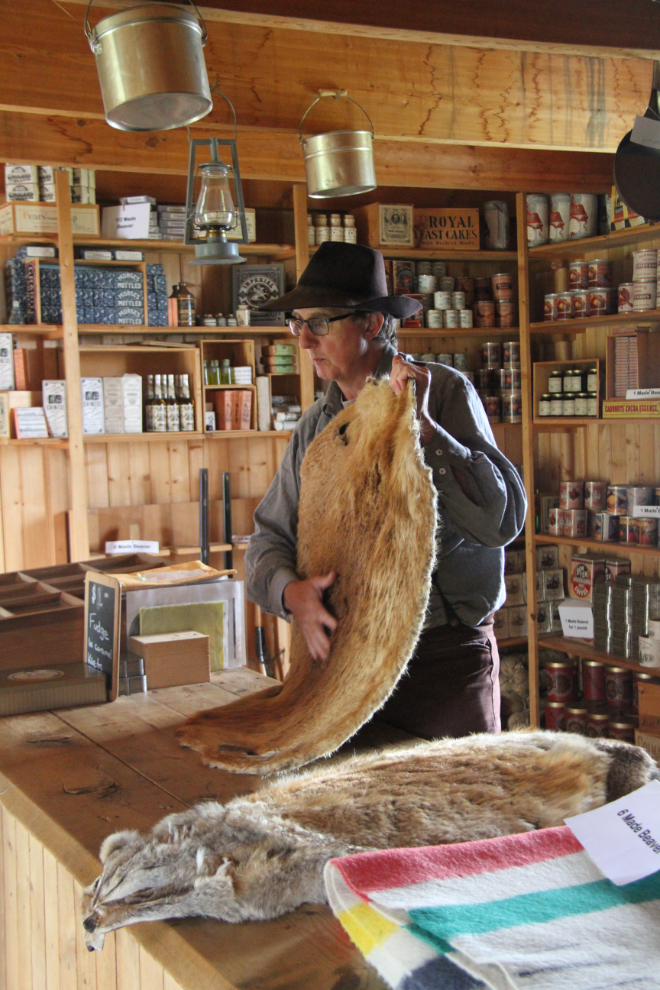
An HBC clerk was always on duty, so having his bed beside his work desk made life easier.
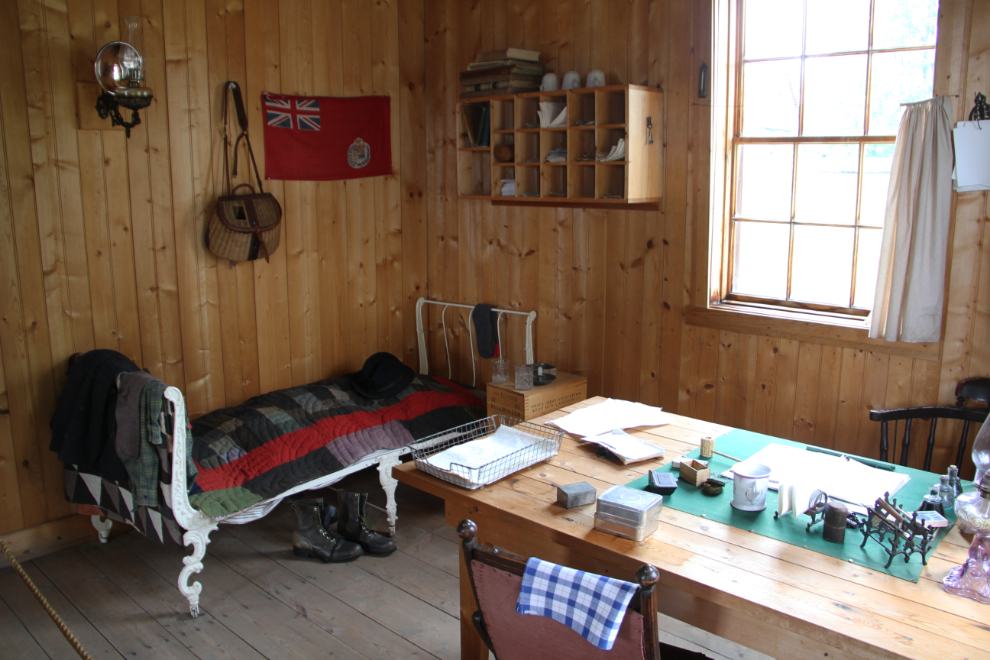
Life was very good for HBC officers, as can be seen in the Officers House, another structure from the major 1884 rebuild. A. C. Murray was the Chief Factor here in 1896, so the house reflects his life. This building operates as a B&B once the site closes for the day.
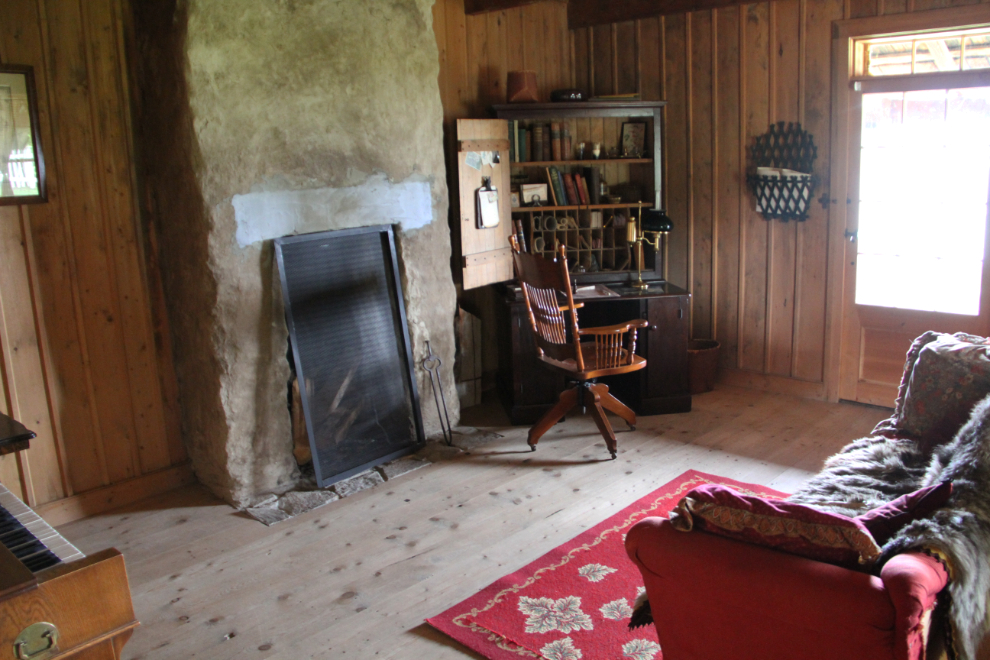
A young relative of the Murrays “got in trouble”, and came to Fort St. James to have her baby, later going home with few knowing what had happened, as the Murrays adopted the baby (if I remember the story correctly).
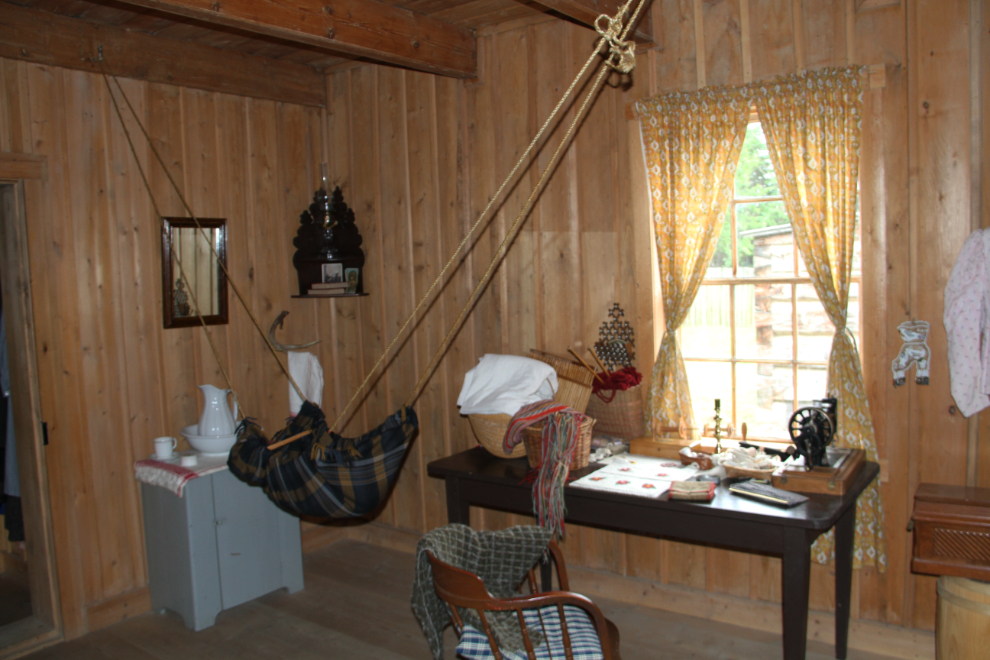
“Caution: Jumping Goats” said the sign. They didn’t jump, but they did snuggle 🙂
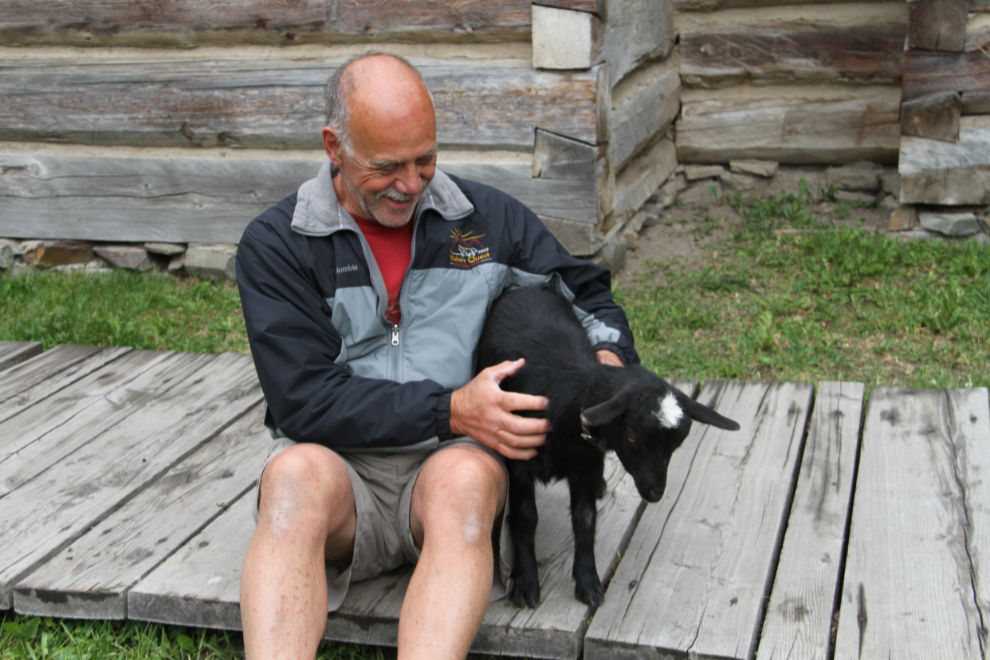
We decided to have lunch at the on-site Commemoration Cafe, prompted by “Mr. Murray’s Chili: This is the best chili you ever ate or your money back. $7.95”. It was very good, but not as good as mine (but I paid 🙂 ).
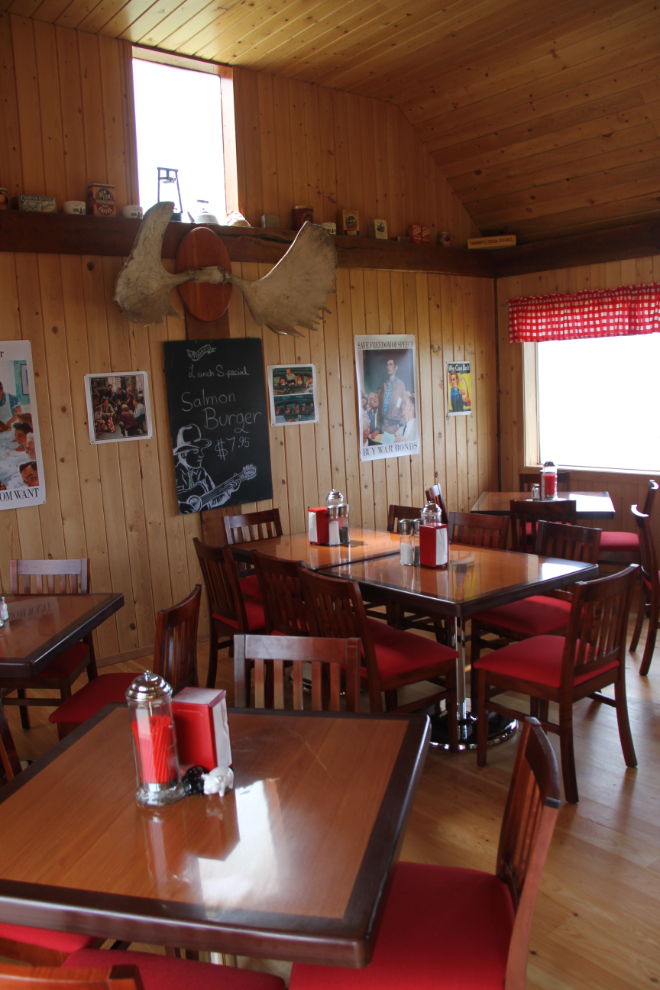
From the fort, we went back to Cottonwood Park, hooked the Tracker up to the motorhome again, and then it was 175 km (109 mi) to the municipal campground I’d read about in Burns Lake. Click here to open an interactive version of the map in a new window.
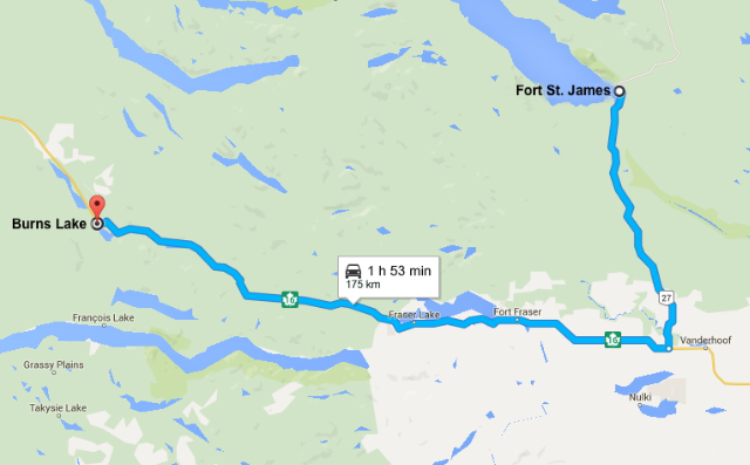
Following rough directions and then finally some camping signs got us here. This couldn’t be right but we knew we were close, so went for a walk in the rain that had arrived.
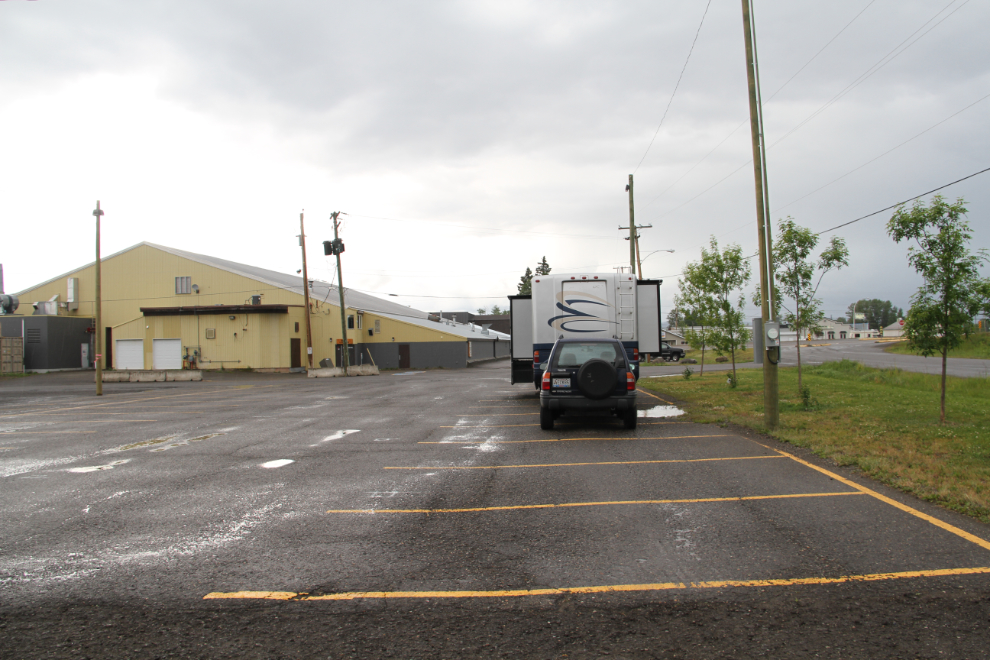
The campground was indeed close, but you have to turn at the road before the camping sign, not after it. Anyway, we had our choice of sites – no services, lovely view, washrooms close by, and free.
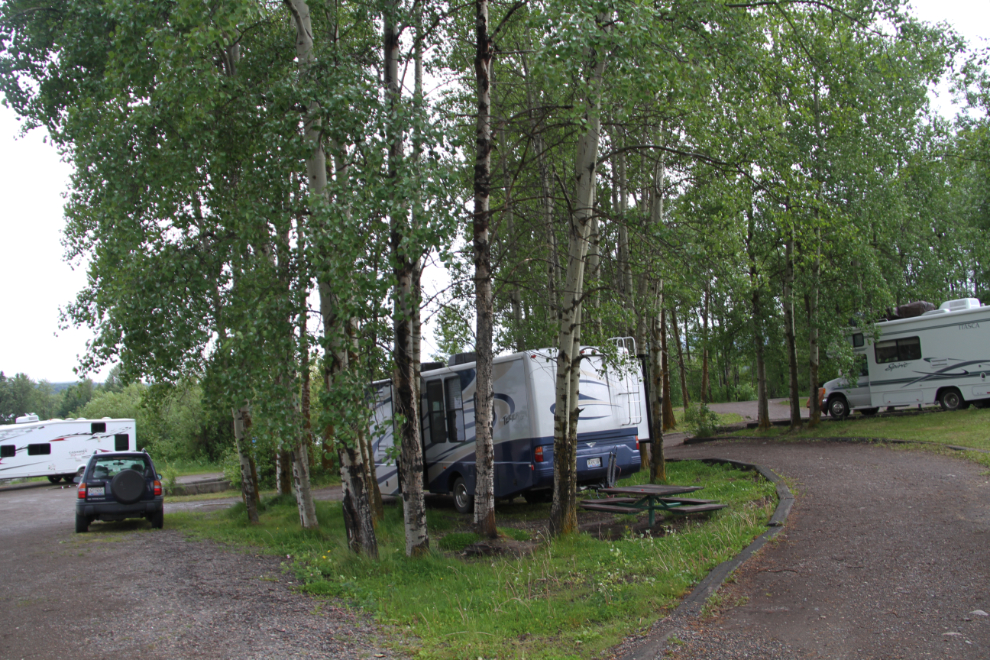
The view out the window. We took Bella and Tucker for a long walk before the heavy rain started, and we do like the sound of the rain on the roof, but any incentive to look around Burns Lake was soon washed away.
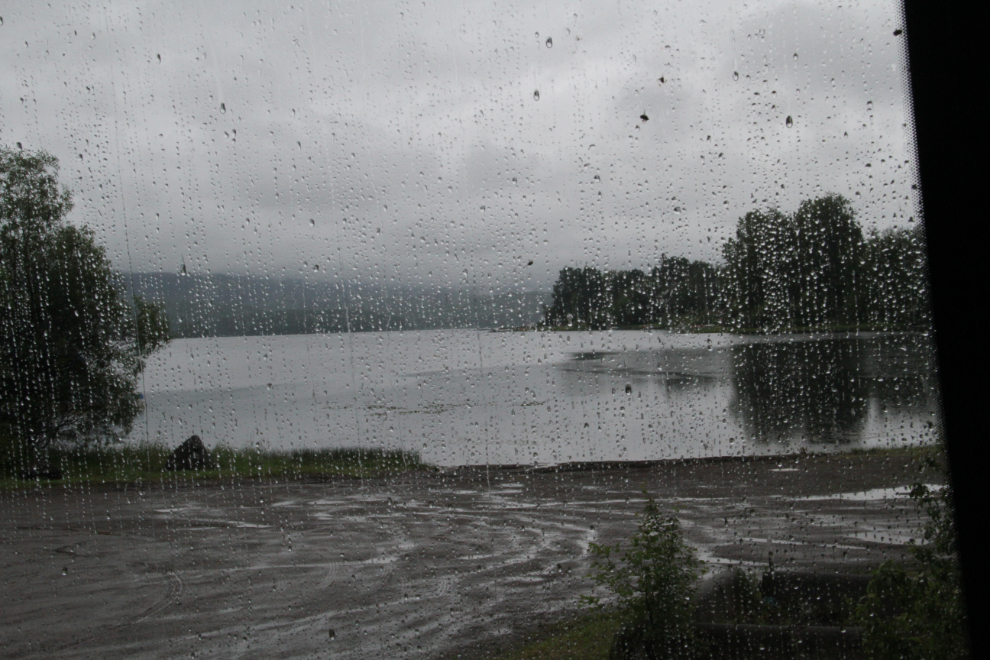
It was good weather for ducks and Canada geese, though, and Molly thoroughly enjoyed her viewing window.
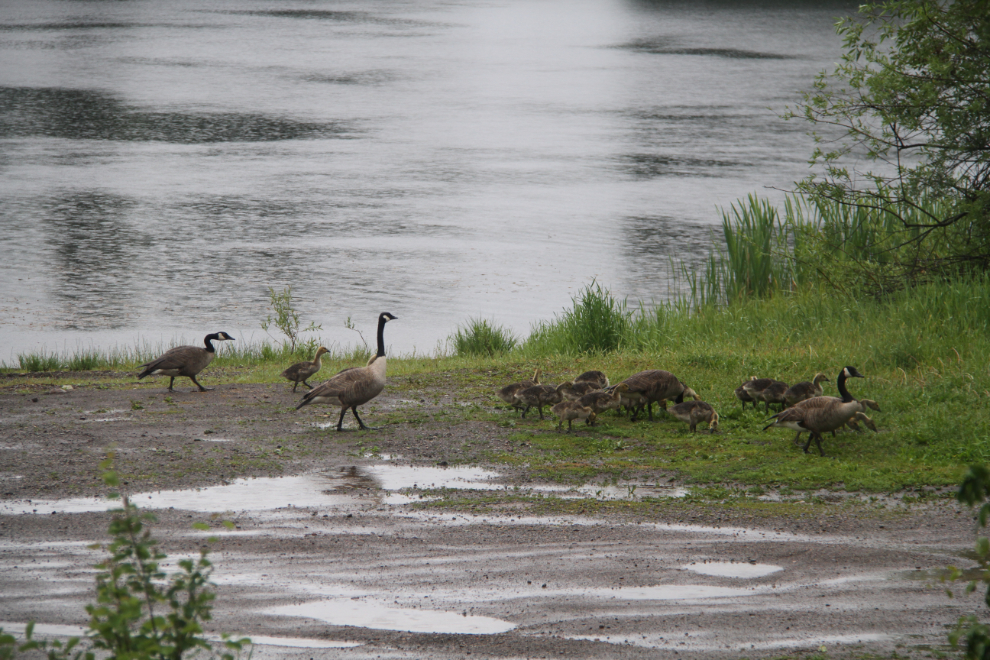
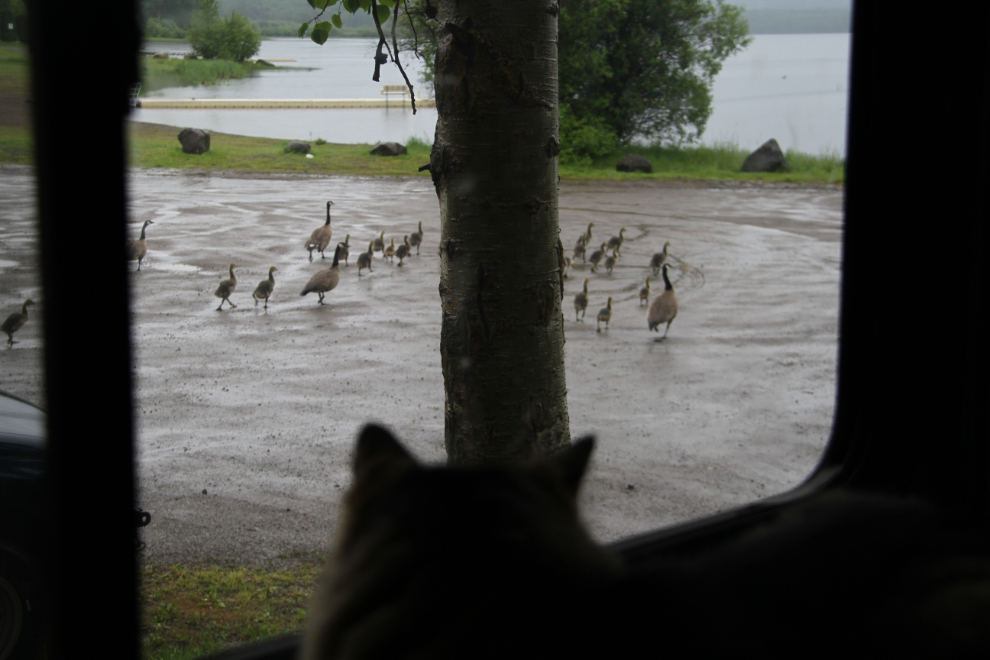
The plan for Saturday was to make the 90-minute drive to Smithers, where we’d spend the night.
